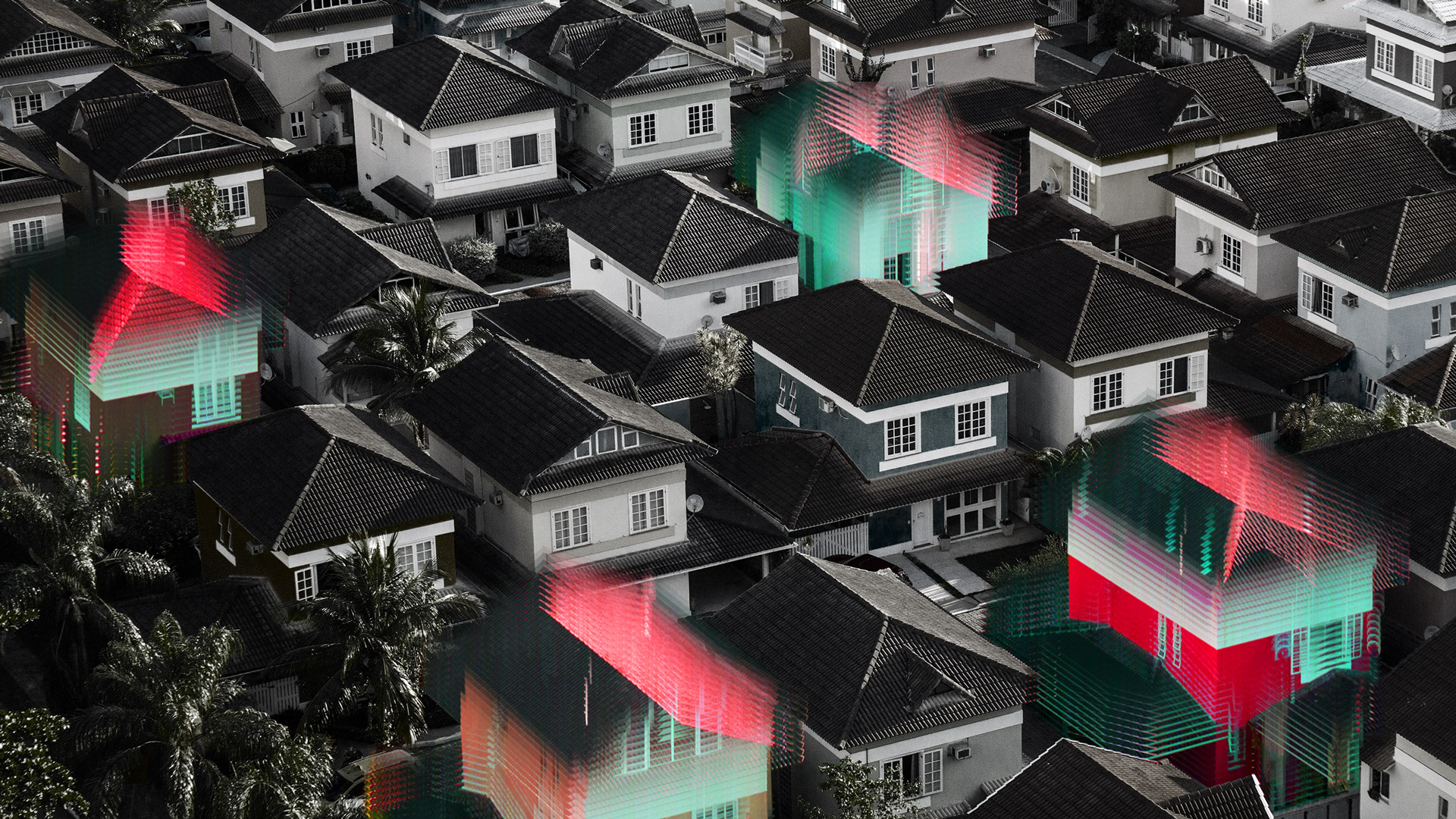
Having meetings in Zoom and Teams has become par for the course since the pandemic hit. But fast forward 10 years and our physical and digital boundaries could blur beyond recognition as our holographic avatars meet in virtual offices to discuss and review virtual documents.
It won’t end there either. Step outside the office and the same 3D digital environment could provide the setting to play games, watch concerts and movies, go shopping, and replicate many of the pastimes we enjoy in regular life.
Welcome to the metaverse, an immersive world that’s being billed as the future of the internet with its own functioning economy and army of dedicated ‘citizens’. The technology is in its infancy, but with the likes of Facebook, Apple, and Microsoft all channelling billions of dollars into its development, virtual real estate investors are moving to exploit the opportunity. Land and property transactions in the metaverse on platforms such as The Sandbox, Decentraland and Axie Infinity have sometimes exceeded millions of dollars.
But is the metaverse a genuine new market for real estate, or just a playground for speculators keen to cash in on pointless commodities? Critics point to the fact that many of the factors making physical land and assets valuable do not apply in the digital realm, as well as uncertainty over specific use cases and the immaturity of underlying technologies.
On the flip side, advocates of the metaverse highlight benefits around inherent scalability and decentralised characteristics that overcome limitations of real-world transactions. Surveyors may soon have an opportunity to apply their skills in assessing and valuing virtual properties, potentially resulting in the creation of new roles such as ‘meta valuer’ or ‘meta property consultant’.
Dan Hughes, founder of real estate tech consultancy Alpha Property Insight, says: “Exactly what the metaverse means for property may not yet be clear, but in the long term it is likely to impact both the use and demand for buildings, how we interact with them, and present challenges to our business models. Over the next decade it will be important for the real estate sector to engage with the virtual world and to establish both its impact on the use of real-world buildings and also its role in the contradictory environment of real estate in the virtual world.”
Immersive internet
A concrete definition of the metaverse doesn’t currently exist, but it is perhaps simplest to think of it as an immersive version of the internet where users, wearing virtual or augmented reality glasses, move between different virtual realms to work, play, socialise and spend money.
Facebook, which rebranded its parent company Meta, signifying its high hopes for the metaverse, has described it as a series of interlinked worlds where a user can move seamlessly from its world to one hosted by Apple, Google, or a video games publisher. One key aspect is persistence, these worlds would continue to exist and evolve over time regardless of whether users are inside them or not.
More and more companies are looking at entering the space, ranging from art galleries selling non-fungible tokens (NFTs), brands setting up retail outlets, individuals investing in homes close to music and movie stars, and others launching venues for games, entertainment or business. According to one forecast by Bloomberg, the metaverse market will reach a huge $800bn in the next two years.
Platforms like Decentraland and The Sandbox offer users the chance to buy land as an investment, through the blockchain, or to become real estate developers and ‘build’ and lease properties. The Decentraland city ‘Genesis’ comprises 90,000 parcels, or NFTs, of land, which increase in cost the closer they are to landmarks or plazas.
However, the mantra ‘location, location, location’ and proximity to town centres, transport hubs and amenities may not apply in an environment constrained only by software, where users can instantly teleport from one location to another.
Darryll Colthrust, technology advisor and founder of Kakushin Lab, says: “People are currently buying metaverse land because they want to be at the centre of things, but the reality is if a company can create a great experience, it doesn't matter if they are, it could be on the furthest edges of those lands, people will still go.”
According to Mike Gedye, head of technology sector vertical in CBRE’s EMEA Advisory business, most activity has been across residential and retail asset classes, but the office sector is likely to be a fast follower. When the COVID-19 pandemic restricted mobility, it was an opportunity for retailers “to super-charge the ecommerce experience and build a new format to target, and retain the loyalty of, an increasingly home shopping consumer base.”
Transactions in these platforms can reach eye-watering sums. Virtual real estate company Republic Realm splashed out a record $4.2m on three square miles of in-game land in The Sandbox last year. Meanwhile, digital property firm Metaverse Group spent $2.43m on a plot in the Fashion Street district in Decentraland, already home to brands like Gucci, Prada and Ralph Lauren.
But the rush to invest doesn’t necessarily paint a picture of a long-term thriving property market. Antony Slumbers, proptech advisor and co-founder of Real Innovation Academy, says: “One thing to realise is that almost no one is spending ‘proper money’ in the metaverse, it's really Ethereum [a blockchain cryptocurrency] … there are a lot of people with a huge amount of theoretical wealth for whom the whole game is to look for the next thing that's going to go up wildly in value.”
High profile purchases by the likes of Nike, Louis Vuitton and others should also be seen in the context of enormous marketing budgets, he adds: “With global ad budgets of over $5bn, it’s nothing to spray a few hundred thousand or a couple of million here or there.”
“Over the next decade it will be important for the real estate sector to engage with the virtual world” Dan Hughes, Alpha Property

Virtual value
What makes conventional real estate attractive to invest in is not necessarily the same as in the virtual world.
Value in the physical world is directly linked to the limited availability of land for development. In the metaverse, plots of digital land are scarce by design because the NFTs minted to represent them are unique and limited in number, so they appreciate in value over time.
However, critics have noted that unless there is one single metaverse platform – think a Facebook of metaverses – nothing stops other new worlds from coming online with more land for sale, watering down the value of assets.
As the metaverse market matures, it may be that the quality of content and the experience offered by virtual environments is the biggest driver of value, reflected in footfall and the volume of unique visitors, as is the case with popular websites.
“There will still be situations where there will be ‘special purchasers’ who might see value in the adjacency to other digital plots,” says Gedye, who points to rumours of premium prices being offered to acquire plots next to superstar rapper Snoop Dogg’s neighbourhood, Snoopverse, in the Sandbox.
“One thing to realise is that almost no one is spending ‘proper money’ in the metaverse, it's really Ethereum” Antony Slumbers, Real Innovation Academy
Transparent transactions
A lucrative market for virtual real estate may not be the only attraction of buying and selling in the metaverse. The underlying blockchain digital ledger technology, with its secure digital structure for decentralised, transparent transactions could avoid the legal and insurance costs and lengthy bureaucratic procedures typical of transactions in the real world.
However, as with much digital innovation, regulation and legal frameworks may have to play catch up if activity in the metaverse escalates.
In a realm generated by software code, where every interaction can be traced and tracked, one might ask if there can be a role for human surveyors whose skills are needed in the physical world to assess and value inherently intangible assets?
“When it comes to assessing and valuing land or sites for buildings, I see a lot of that work moving towards utilising AI,” says Colthrust. “Metaverse platforms are already using AI to identify undervalued plots of land based upon understanding of how people are moving around and the companies and activities in and around the area.”
Gedye argues that some skills, such as completing due diligence, negotiation, funding, and mapping/modelling, have the potential to be transferable.
“We are already seeing increased demand for expertise in data science, digital mapping, smart buildings, user experience, environmental, social and governance (ESG). So it doesn’t take much imagination to see the emergence of immersive/digital experts operating in a parallel metaverse,” he says.
If the idea of leading a virtual life alongside your regular one sounds alluring, it may be several years before the experience lives up to expectations. The technology is some way off maturity, with a lack of system interoperability being a key challenge, existing platforms are glitchy and many plots have remained empty, which demonstrates the emphasis on speculative trading.
Visitor numbers to the metaverse are also disappointing. According to figures from the website blockchaingamer.biz, there were just 1,180 average active daily users of The Sandbox in March and 978 in Decentraland. Compare that to the most popular online game Counter-Strike: Global Offensive with 833,333 daily active users.
To some experts, the term ‘metaverse’ is a convenient visual wrapper for a number of converging next gen technologies, including blockchain, internet 3.0, AI and 5G, for which the precise role and interdependence has yet to be defined and understood.
Perhaps the biggest implications for the real estate sector will be in how the results can be reapplied in real-world settings and scenarios. The focus on immersion, VR and AR will, according to Colthrust, advance the introduction of spatial technology (such as mapping software) across the entire value chain, from ideation, through to construction and ongoing maintenance.
“Architects will be designing at another level of fidelity and everyone in the supply chain will be able to view and walk around those plans. This is also where the data exchange is going to be happening, rather than emails being sent back and forth,” he says.
This goes beyond the concept of digital twins of the built environment, he adds, instead representing a “paradigm shift” in how people work, with “everything represented in a spatial way for anyone to be able to interact with and work from.” It’s an inspiring vision of the future, just not the one currently being peddled by tech giants and enthusiastic marketing companies.
“Metaverse platforms are already using AI to identify undervalued plots of land” Darryll Colthrust, Kakushin Lab


